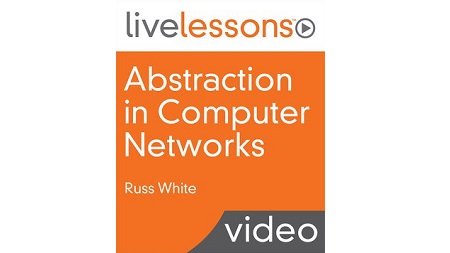
English | MP4 | AVC 1280×720 | AAC 48KHz 2ch | 3 Hours | 5.23 GB
Computer networks rely on many forms of abstraction to scale—indeed, to operate at all. While at least some of this abstraction is visible, such as route aggregation and flooding domain boundary summarization, much of it is hidden in unexpected places, such as in the logical construction of a network device, in the operation of BGP route reflectors, and in the data plane protocol stack.
Abstraction in Computer Networks LiveLessons considers abstraction in theory and practice across many of the places it is used in building network devices, network software, and networks. Tradeoffs and common problems are considered, and the relationship between abstraction and complexity is discussed.
Viewers learn how to think about what abstraction hides, and why it is important to hide each of these things. They also learn how to look in unexpected places for abstraction, how to think about leaky abstractions, and how Keith’s Law and the first corollary to Keith’s Law impact abstraction, including unintended consequences. Abstraction also relates to the State/Optimization/Surface tradeoff triad, so a section of this LiveLesson considers that tradeoff and how abstraction controls the speed and amount of state, impacts the depth and breadth of interaction surfaces, and reduces optimization.
Learn How To
- Find and understand abstraction, including hidden abstractions, in a network
- Find and understand the tradeoffs between abstraction, complexity, understandability, and network optimization
- Understand the relationship between Keith’s Law, the first corollary to Keith’s Law, the Law of Leaky Abstractions, and abstraction
- Relate unintended consequences to abstraction and interaction surfaces
- Relate abstraction to the state/optimization/surface tradeoff triad in network design
Who Should Take This Course
- Anyone who wants to go beyond configuring route aggregation, ABRs, redistribution, and virtual topologies so they can understand how these abstractions work to reduce complexity
- Anyone who wants to understand the many tradeoffs involved in all kinds of abstraction, and how to seek out and find those tradeoffs in order to make good design decisions
- Anyone who wants to be able to decide what kinds of abstraction to use to solve specific problems, how much abstraction to use, and where to apply it
Table of Contents
01 Abstraction in Computer Networks – Introduction
02 Learning objectives
03 1.1 Background & Overview
04 1.2 Kinds of Abstraction
05 1.3 Control Plane Abstraction
06 Learning objectives
07 2.1 Failure Domains and Scaling
08 2.2 Policy and Troubleshooting
09 Learning objectives
10 3.1 Leaky Abstractions
11 3.2 Other Abstraction Examples
12 3.3 Feedback Loops
13 3.4 Feedback Loop Examples
14 3.5 Unintended Consequences–Part 1
15 3.6 Unintended Consequences–Part 2
16 Learning objectives
17 4.1 Complexity in Theory
18 4.2 Complexity Examples
19 4.3 Complexity Tradeoffs
20 4.4 Managing Complexity
21 Abstraction in Computer Networks – Summary
Resolve the captcha to access the links!